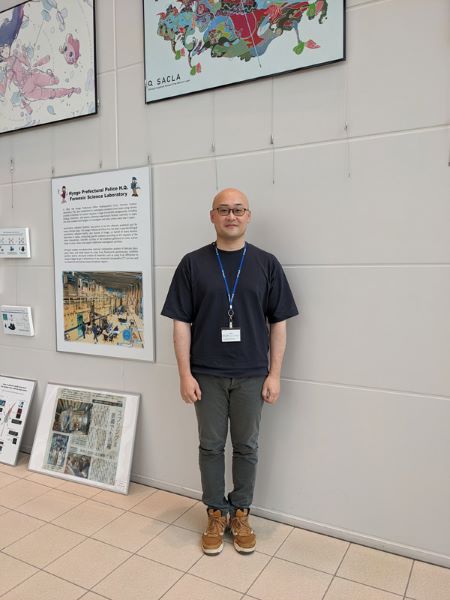Dec. 19, 2024
Lighting the path for large-scale laser studies
Jungmin Kang, Research Scientist
Please describe your role.
I am a beamline scientist at SACLA (SPring-8 Angstrom Compact free electron LAser), an X-ray free-electron laser (XFEL) facility roughly 40 km north-west of Himeji in Japan. There, I support the experiments of users, mainly in serial femtosecond crystallography, and I also develop beamline instrumentation.
Please briefly describe your research.
I am developing a sample delivery system that dispenses nanoliter droplets of protein crystal suspension and transports them to the X-ray laser pulse area. This allows the droplets to synchronize with the X-ray laser pulses to avoid sample waste. I am also developing a trigger method to activate a non-photosensitive protein so that we can get data on how these proteins work.
Time-resolved serial femtosecond crystallography (SFX) can help observe protein conformational changes at roughly body temperature. However, this technique for performing time-resolved SFX is challenging due to the amount of samples needed and the limitations of triggers to activate proteins. It is important to solve these problems so that proteins, such as enzymes and receptors, can be examined in more detail.

How did you become interested in your field?
In graduate school, I studied metal crystal growth using low-energy electron diffraction. I was fascinated by the abundance of information that could be read from the diffraction.
Later, I studied coherent diffraction imaging using synchrotron radiation, and I wanted to investigate complex targets, such as observing the dynamic structures of biological protein molecules, using more intense and coherent light sources to reveal the detail of changes over time.
The X-ray laser pulse at SACLA is a highly coherent light and is 1,000,000 times more intense than synchrotron radiation.
What is the best thing about working at RIKEN?
SACLA is one of the most advanced pieces of equipment in the world. I like that many of the results from SACLA are achieved through collaboration across various fields. For example, the sample delivery system involves researchers and engineers from many disciplines, including X-ray optics, mechanical design, fluid dynamics, structural biology and data science.
Another great thing about working at RIKEN is having opportunities to participate in large-scale research and development projects. Now, I am participating in a project to develop an X-ray detector with the world’s largest detection area.
Please tell us more about your professional goals.
My main professional goal is to help users at SACLA with their research as much as possible. There are so many parameters to control in a single experiment and it is not easy to become proficient at using beamlines. Reliable support from the facility is essential for the success of each experiment.
Rate this article

